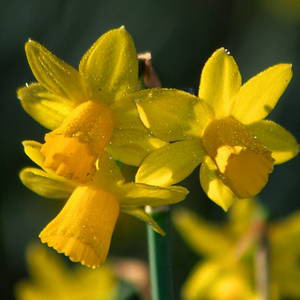My Art Starts in the Garden
I love to share my garden! This is a creation that I’ve been working on for over 30 years and what fun is it keeping it all to myself? That feels so selfish to me.
So the best thing I can do, since it’s hard for so many of you to travel here, is to take you on a garden tour around my 1/2 acre woodland walks in Northport NY. We’re Zone 7 here and this Garden Tour video is in the early spring on March 21, 2020 around 6pm in the evening.
I haven’t yet finished my fall cleanup at this point and of course, as gardeners well know, the garden is never perfect. At this time of year, in my neck of the woods, something new opens every single day. It’s a very exciting time for me each day as I walk around to see what’s new. Spring is about renewal. About optimism. About color. About surprises.
This is the first in a series of Garden Tour videos I’ll be doing so please remember to subscribe to my YouTube Channel to be alerted when I publish new videos.
My garden is the source material for almost all of my paintings. It is where I get my inspiration. It’s where I present yet another aspect of my creativity but this one is in 3D and seasonally adjusted over time and temperature.
Come and take a casual walk with me around my garden. Enjoy!





 Daffodils are classified using two parts of the flower. For the purpose of this description, the daffodil is divided into two regions, the perianth (petals) and corona (cup).
Daffodils are classified using two parts of the flower. For the purpose of this description, the daffodil is divided into two regions, the perianth (petals) and corona (cup). Division 1 – Trumpet
Division 1 – Trumpet Division 2 – Large Cup
Division 2 – Large Cup Division 3 – Short Cup
Division 3 – Short Cup Division 4 – Double
Division 4 – Double Division 5 – Triandrus
Division 5 – Triandrus Division 6 – Cyclamineus
Division 6 – Cyclamineus Division 7 – Jonquilla
Division 7 – Jonquilla Division 8 – Tazetta
Division 8 – Tazetta Division 9 – Poeticus
Division 9 – Poeticus Division 10 – Bulbocodium Hybrids
Division 10 – Bulbocodium Hybrids Division 11 – Split Corona
Division 11 – Split Corona Division 12 – Other Cultivars
Division 12 – Other Cultivars Division 13 – Species All species and reputedly wild forms.
Division 13 – Species All species and reputedly wild forms.















